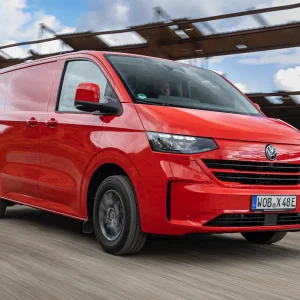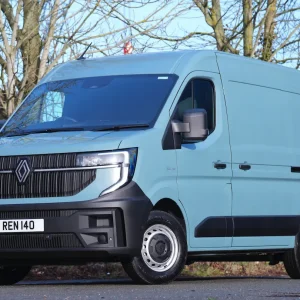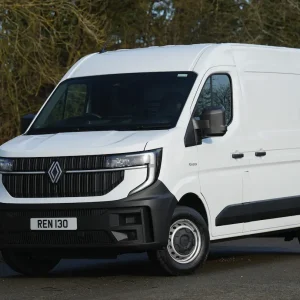The large van trio of Peugeot Boxer, Citroen Relay and Fiat Ducato have all been given a mid-life refresh and the PSA Peugeot Citroen/Fiat partnership seeks to address the renewed threat from the new Ford Transit and the Mercedes Sprinter, heavily revised late last year.
The three vans are now more visually diverse from each other, with the Boxer taking on styling that better links it to Peugeot’s car range, in particular the new 308 model courtesy of the wide grille.
Daytime running lights are now standard, with LEDs an option, and the developers have made a number of engineering changes including strengthening the body structure, revising the mechanism for the side and rear doors, which will go to 270 degress of opening as a £250 optional extra, larger brakes and new suspension damping. From a cost of ownership point of view, the engine range now comes fitted with a timing chain designed to last the life of the vehicle, and service intervals have been extended to two years or 30,000 miles.
But it’s the interior and specification improvements that are the biggest draw to the facelifted Boxer, especially on the Professional specification, the higher of the two offered. For an attractive extra £1000, equipment including integrated TomTom-based satnav, air conditioning cruise control, an alarm and rear parking sensors joins the standard list, while all Boxers now come with ESP, a full steel bulkhead DAB radio and Bluetooth.
A reversing camera is optional, along with a variety of safety and security items such as lane departure warning, tyre pressure monitoring, load adaptive control and passenger and curtain airbags.
The cabin is improved, especially with the new central stack dominated on the Professional model by the five-inch touch-screen system that can read text messages as well as housing the audio and satellite navigation systems. But overall, it’s still more a traditional commercial vehicle than the new breed of car-like interior quality, with too much hard plastic evident.
From a loading perspective, Peugeot spins its front-wheel drive layout as a positive, claiming the Boxer doesn’t suffer from the payload reduction that comes with the extra weight of a rear-drive layout that’s admittedly better for traction and towing. The load width of 142cm between the wheel arches is the widest on the market, while the low load sill is also useful.
To drive, the Boxer is still pretty noisy compared to more refined and newer rivals, while the engineering changes don’t bring the Boxer up to the level of the Mercedes Sprinter or particularly new Ford Transit from a driving perspective. But there’s nothing to particularly dislike, and a part-load in the least powerful 110hp diesel didn’t seem to provide too much hindrance. At higher speeds the 130hp might be more useful and increase the leisurely pick-up on motorways, and that model also comes with stop-start for an extra £200 in L3H2 Professional mode, and that improves fuel economy by around 1.0mpg, while reducing CO2 emissions to 189g/km, the most efficient model in the class.
There is also a 180hp 3.0-liter diesel model, though that only comes with the four-tonne version of the Boxer.
The range of four vehicle lengths and three heights gives eight different sizes of van, from 8.0m3 to 17.0m3 of load space, while a window van is also available in four different sizes.
As mid-life freshen-ups go, this is a decent effort and the equipment levels on the Professional level in particular make for an attractive package, especially for drivers spending lengthy periods in the cabin. On paper there’s nothing to dislike about the Boxer, with the claimed durability improvements also welcome, but in cabin quality, drive and overall appeal it just can’t match the class best. This is a van originally launched eight years ago, and the van market has moved on at a rapid pace.
Verdict:
Improved, especially in terms of front styling and equipment, but newer rivals are still more appealing





